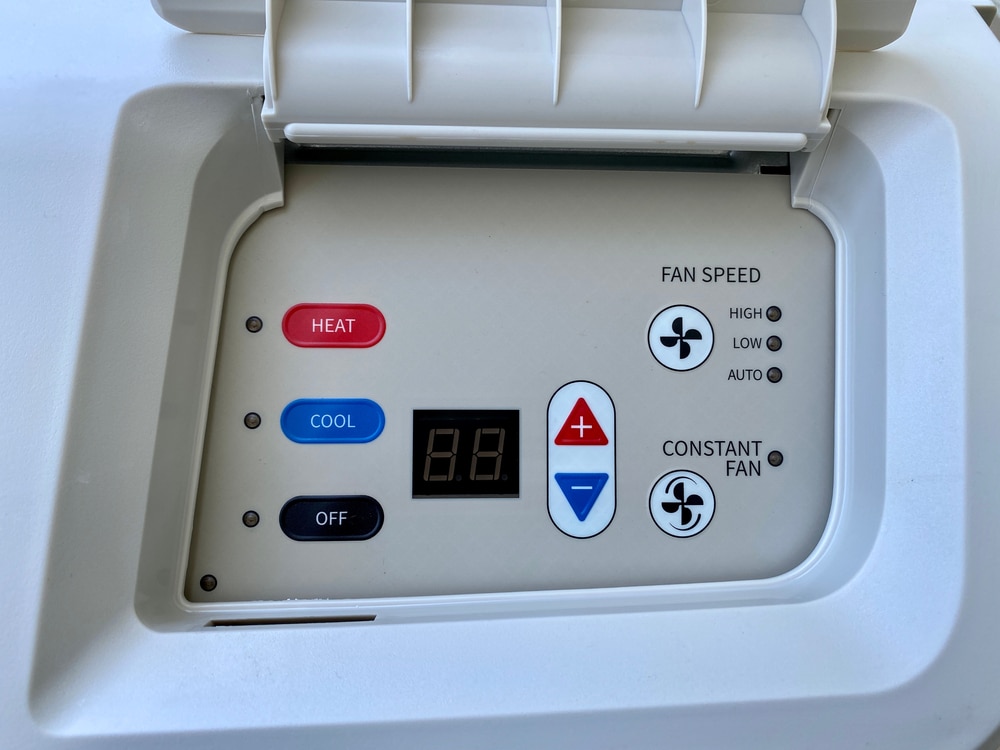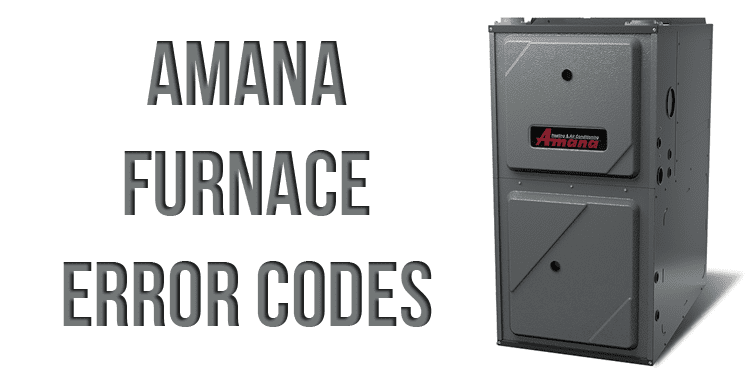Amana Ptac Error Codes

Frequently Asked Questions About Amana PTAC Error Codes
Amana Packaged Terminal Air Conditioners (PTACs) are known for their reliability, but like any complex appliance, they can sometimes encounter issues. When a problem arises, your Amana PTAC will often display an error code to help you diagnose the issue. This FAQ aims to answer some common questions about these error codes, helping you understand what they mean and what steps you can take.
Q: What are Amana PTAC error codes and why are they important?
Error codes are essentially diagnostic signals that your Amana PTAC uses to communicate that something is wrong. They appear on the unit's display panel and are typically a combination of letters and numbers (e.g., E1, F2, etc.).
Understanding these codes is important because:
- Quick Diagnosis: They provide a starting point for troubleshooting, saving you time and potentially money by pinpointing the problem area.
- Prevent Further Damage: Ignoring error codes can lead to more significant damage to your PTAC unit over time.
- Informed Decisions: Knowing the error code allows you to better communicate the problem to a technician, ensuring they bring the necessary tools and parts.
- Safety: Some error codes indicate safety-related issues that require immediate attention.
Q: Where can I find a list of Amana PTAC error codes and their meanings?
The best source for a comprehensive list of error codes is your Amana PTAC's user manual. This document should include a detailed table explaining each code and potential causes. Keep your user manual in a safe place for easy reference.
If you've misplaced your user manual, you can often find a digital version on the Amana website. Look for the model number of your PTAC and download the corresponding manual. Many third-party HVAC websites and forums also compile lists of common error codes, but always verify the information against the official Amana documentation when possible. However, be cautious about relying solely on unofficial sources, as the accuracy may vary.
Generally you may see:
- E1- Room temperature sensor error.
- E2- Coil temperature sensor error.
- E3- Anti-freeze protection.
- E4- High pressure protection.
- E5- Overload protection.
- E6- Communication error.
- F1- EEPROM error.
These are a few examples, but it is important to look in your user manual to understand all potential error codes for your particular unit model.
Q: What are some common Amana PTAC error codes and what do they usually indicate?
While specific error codes vary depending on the model, here are a few common examples and their typical meanings:
- E1 (Room Temperature Sensor Error): This often indicates a problem with the sensor that measures the room temperature. This could be a faulty sensor, a loose connection, or damage to the wiring. A technician will need to test the sensor's resistance and check the wiring.
- E2 (Coil Temperature Sensor Error): Similar to E1, this points to an issue with the sensor that monitors the temperature of the cooling coil. The coil can become either too hot or too cold. Again, the sensor itself, the wiring, or the connection could be the culprit.
- E3 (Anti-Freeze Protection): This code typically means that the evaporator coil is getting too cold and there is a risk of freezing. This could be caused by low refrigerant, a dirty air filter restricting airflow, or a malfunctioning fan motor.
- E4 (High Pressure Protection): This code usually indicates that the refrigerant pressure in the system is too high. This can be caused by a blockage in the refrigerant lines, a dirty condenser coil, or a malfunctioning compressor. This is a serious issue and requires professional attention.
- E5 (Overload Protection): The compressor motor is drawing too much current. This can be caused by a failing capacitor, a locked-up compressor, or low voltage to the unit.
- E6 (Communication Error): This often signals a problem with the communication between the unit's control board and other components. This is a complex issue that usually requires a trained technician to diagnose and repair.
- F1 (EEPROM Error): This indicates an error with the EEPROM (Electrically Erasable Programmable Read-Only Memory) chip on the control board. This chip stores important configuration data for the PTAC. This error usually requires replacing the control board.
Remember, these are just general interpretations. Always refer to your unit's specific error code list in the user manual for accurate information.
Q: Can I fix Amana PTAC error codes myself, or do I need to call a professional?
Whether you can fix an error code yourself depends on the code and your comfort level with appliance repair. Some simple issues, such as a dirty air filter causing an E3 error, can be easily resolved by cleaning or replacing the filter. Other problems, such as loose wiring connections, might be addressed by someone with basic electrical knowledge, but should only be attempted if you are confident in your abilities and always after disconnecting the power.
However, many error codes, especially those related to refrigerant issues (like E4), compressor problems (like E5), or control board malfunctions (like E6 and F1), require the expertise of a qualified HVAC technician. These issues often involve specialized tools, knowledge of refrigerant handling procedures, and a deep understanding of the PTAC's internal components. Attempting to fix these problems yourself could be dangerous and potentially void your warranty.
Generally, if you're unsure about the cause of the error code or how to fix it, it's best to call a professional. This will ensure that the problem is diagnosed accurately and repaired safely and effectively.
Q: What steps should I take when an Amana PTAC error code appears?
Here's a recommended course of action when an error code pops up on your Amana PTAC:
- Note the Error Code: Write down the exact error code (e.g., E1, F2). This is crucial for troubleshooting.
- Consult the User Manual: Look up the error code in your user manual to understand its meaning and potential causes.
- Try Simple Troubleshooting Steps: Based on the error code's description, attempt any easy fixes, such as:
- Cleaning or replacing the air filter.
- Checking for any obstructions blocking airflow around the unit.
- Ensuring the unit is properly plugged in and receiving power.
- Turning the unit off and then back on to see if the error clears.
- Document Your Actions: Keep a record of any troubleshooting steps you've taken. This information can be helpful for a technician if you need to call one.
- Call a Professional (If Necessary): If the error code persists after trying the simple steps, or if the code indicates a serious issue, contact a qualified HVAC technician. Provide them with the error code and any information you've gathered about the problem.
Q: How can I prevent Amana PTAC error codes from occurring?
While you can't completely eliminate the possibility of error codes, proactive maintenance can significantly reduce their frequency. Here are some preventive measures you can take:
- Regular Air Filter Cleaning/Replacement: A dirty air filter restricts airflow, putting strain on the system and potentially triggering error codes like E3 (anti-freeze protection). Check your filter monthly and clean or replace it as needed.
- Coil Cleaning: Periodically clean the condenser and evaporator coils to remove dust and debris that can impede heat transfer. You can use a coil cleaner specifically designed for HVAC systems. Always disconnect power before cleaning.
- Inspect and Clean Vents: Ensure that the supply and return vents are free from obstructions, such as furniture or curtains.
- Professional Maintenance: Schedule annual maintenance with a qualified HVAC technician. They can inspect the unit for potential problems, clean internal components, check refrigerant levels, and ensure that all parts are functioning correctly.
- Proper Usage: Avoid setting the thermostat to extreme temperatures, as this can overwork the system and increase the risk of problems.
- Monitor Performance: Pay attention to how your PTAC is performing. If you notice any unusual noises, reduced cooling or heating capacity, or other issues, address them promptly.
- Protect from the Elements: Consider using a protective cover during periods of inactivity, especially in harsh weather conditions, to prevent damage from rain, snow, or debris.
Q: What information should I provide to an HVAC technician when reporting an Amana PTAC error code?
When you call an HVAC technician, providing them with accurate and detailed information will help them diagnose the problem more quickly and efficiently. Be sure to include the following:
- The Exact Error Code: This is the most important piece of information.
- The Model Number of Your PTAC: This allows the technician to identify the specific unit and access relevant technical information.
- A Description of the Problem: Explain what you observed before the error code appeared (e.g., reduced cooling, strange noises).
- Any Troubleshooting Steps You've Already Taken: This helps the technician avoid repeating steps you've already tried.
- The History of the Unit: Let the technician know when the unit was installed and if it has had any previous repairs or maintenance.
- Your Contact Information: Provide a phone number and email address where the technician can reach you.
By providing this information, you'll help the technician arrive prepared to diagnose and repair your Amana PTAC quickly and effectively, ultimately saving you time and money.










